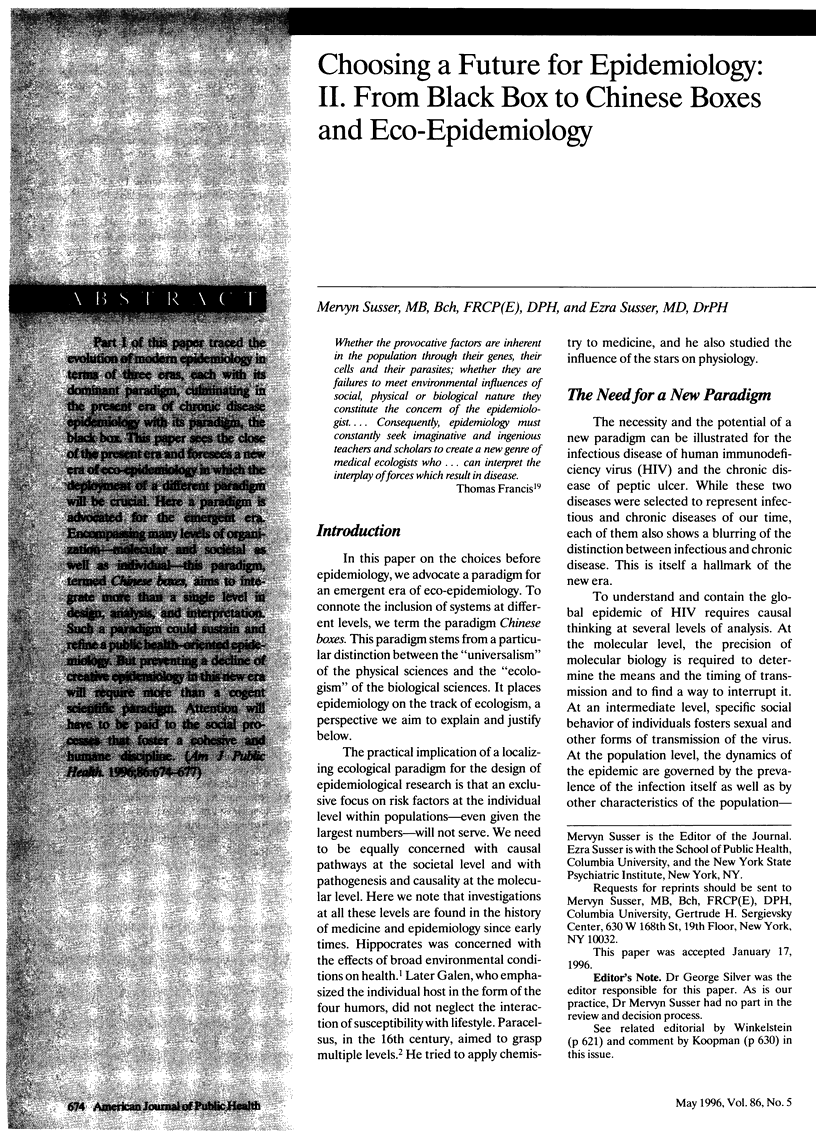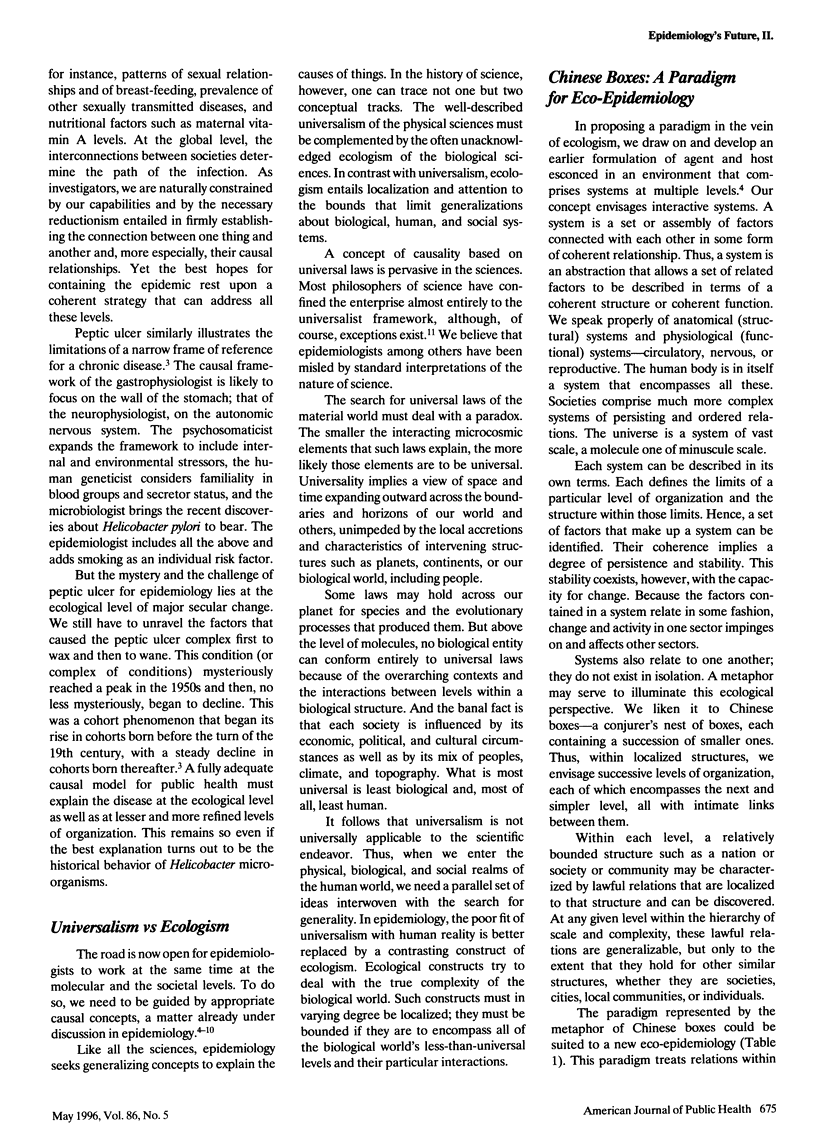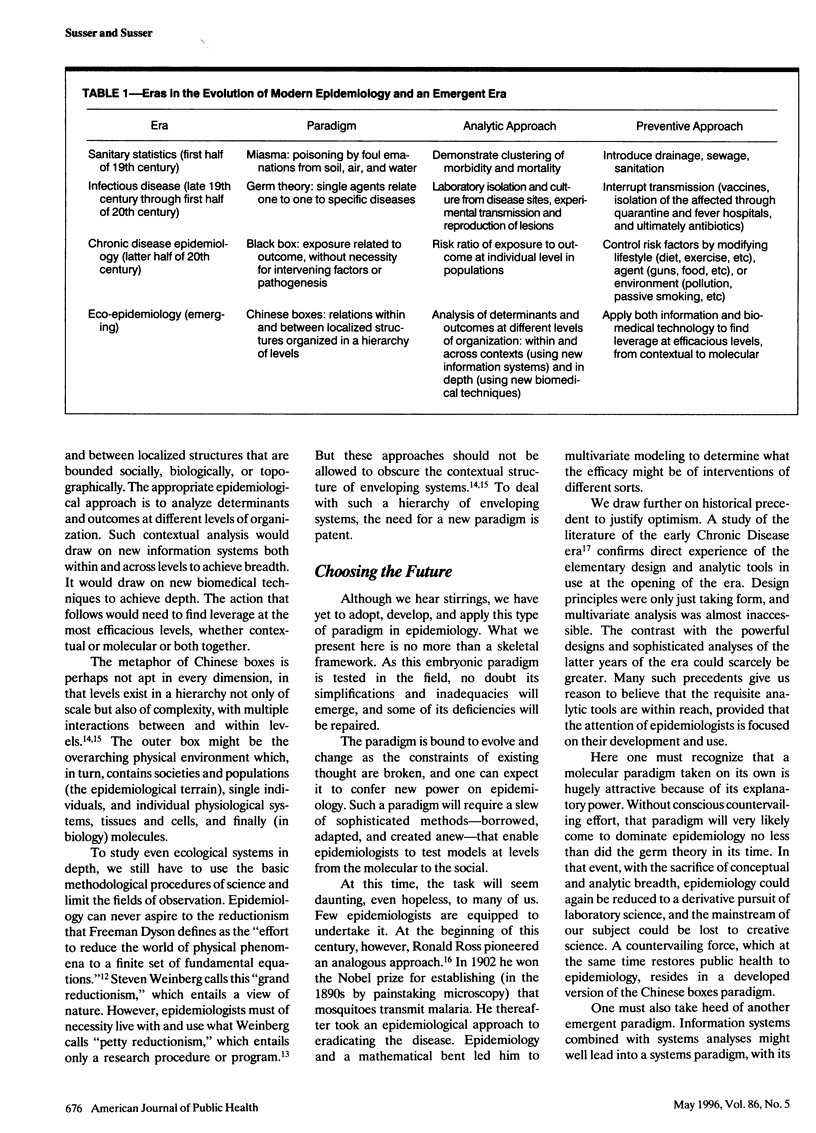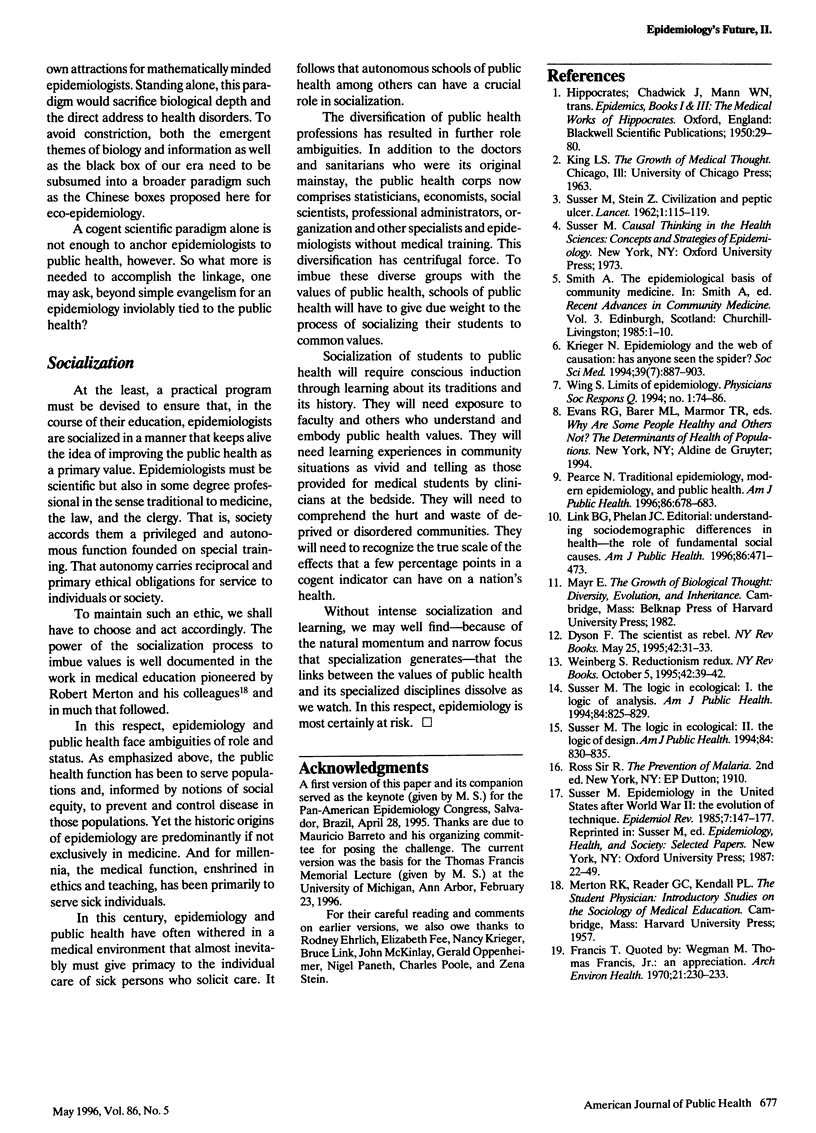Abstract
Part I of this paper traced the evolution of modern epidemiology in terms of three eras, each with its dominant paradigm, culminating in the present era of chronic disease epidemiology with its paradigm, the black box. This paper sees the close of the present era and foresees a new era of eco-epidemiology in which the deployment of a different paradigm will be crucial. Here a paradigm is advocated for the emergent era. Encompassing many levels of organization--molecular and societal as well as individual--this paradigm, termed Chinese boxes, aims to integrate more than a single level in design, analysis, and interpretation. Such a paradigm could sustain and refine a public health-oriented epidemiology. But preventing a decline of creative epidemiology in this new era will require more than a cogent scientific paradigm. Attention will have to be paid to the social processes that foster a cohesive and humane discipline.
Full text
PDF



Selected References
These references are in PubMed. This may not be the complete list of references from this article.
- Krieger N. Epidemiology and the web of causation: has anyone seen the spider? Soc Sci Med. 1994 Oct;39(7):887–903. doi: 10.1016/0277-9536(94)90202-x. [DOI] [PubMed] [Google Scholar]
- Link B. G., Phelan J. C. Understanding sociodemographic differences in health--the role of fundamental social causes. Am J Public Health. 1996 Apr;86(4):471–473. doi: 10.2105/ajph.86.4.471. [DOI] [PMC free article] [PubMed] [Google Scholar]
- Pearce N. Traditional epidemiology, modern epidemiology, and public health. Am J Public Health. 1996 May;86(5):678–683. doi: 10.2105/ajph.86.5.678. [DOI] [PMC free article] [PubMed] [Google Scholar]
- SUSSER M., STEIN Z. Civilisation and peptic ulcer. Lancet. 1962 Jan 20;1(7221):115–119. [PubMed] [Google Scholar]
- Susser M. Epidemiology in the United States after World War II: the evolution of technique. Epidemiol Rev. 1985;7:147–177. doi: 10.1093/oxfordjournals.epirev.a036280. [DOI] [PubMed] [Google Scholar]
- Susser M. The logic in ecological: I. The logic of analysis. Am J Public Health. 1994 May;84(5):825–829. doi: 10.2105/ajph.84.5.825. [DOI] [PMC free article] [PubMed] [Google Scholar]
- Susser M. The logic in ecological: II. The logic of design. Am J Public Health. 1994 May;84(5):830–835. doi: 10.2105/ajph.84.5.830. [DOI] [PMC free article] [PubMed] [Google Scholar]
- Thomas Francis, Jr.: an appreciation. Arch Environ Health. 1970 Sep;21(3):230–236. doi: 10.1080/00039896.1970.10667230. [DOI] [PubMed] [Google Scholar]


